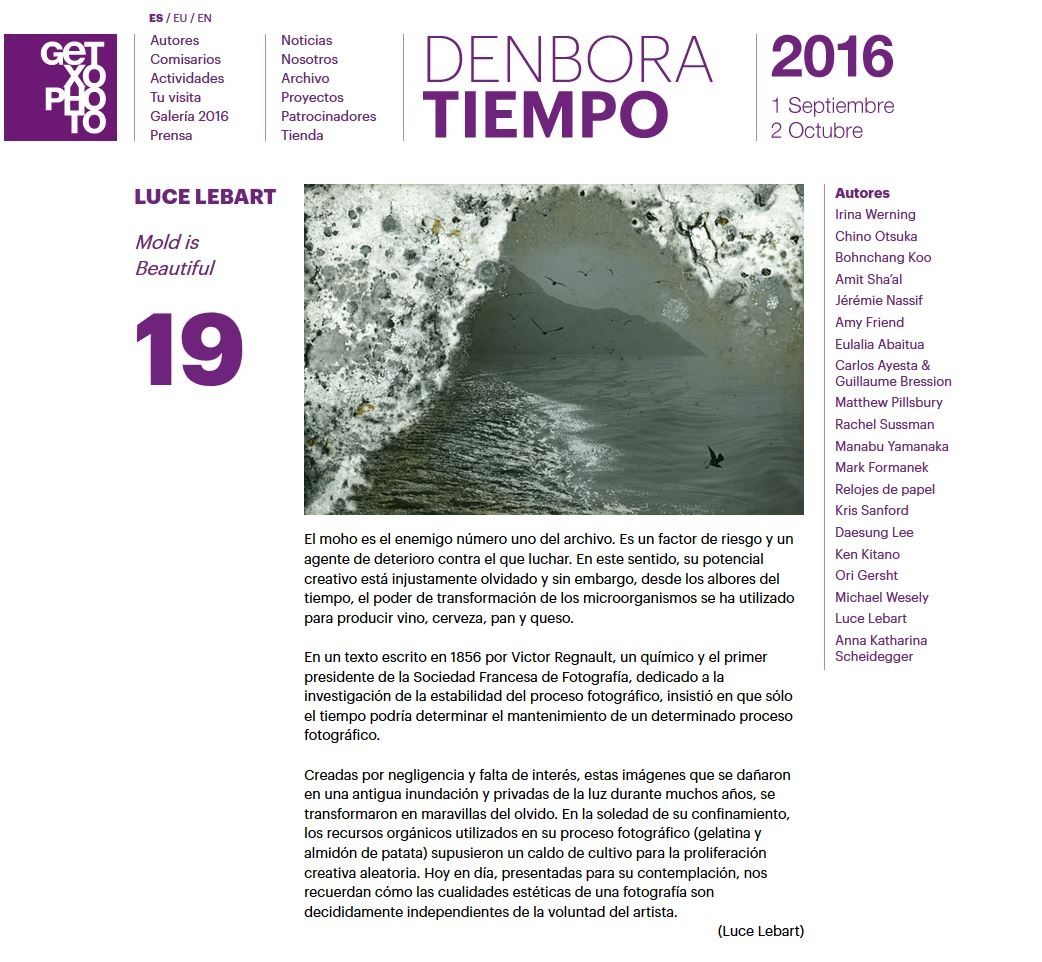Mold is beautiful, GetxoPhoto (Espagne), du 1er septembre au 2 octobre 2016.
"El moho es el enemigo número uno del archivo. Es un factor de riesgo y un agente de deterioro contra el que luchar. En este sentido, su potencial creativo está injustamente olvidado y sin embargo, desde los albores del tiempo, el poder de transformación de los microorganismos se ha utilizado para producir vino, cerveza, pan y queso.
En un texto escrito en 1856 por Victor Regnault, un químico y el primer presidente de la Sociedad Francesa de Fotografía, dedicado a la investigación de la estabilidad del proceso fotográfico, insistió en que sólo el tiempo podría determinar el mantenimiento de un determinado proceso fotográfico.
Creadas por negligencia y falta de interés, estas imágenes que se dañaron en una antigua inundación y privadas de la luz durante muchos años, se transformaron en maravillas del olvido. En la soledad de su confinamiento, los recursos orgánicos utilizados en su proceso fotográfico (gelatina y almidón de patata) supusieron un caldo de cultivo para la proliferación creativa aleatoria. Hoy en día, presentadas para su contemplación, nos recuerdan cómo las cualidades estéticas de una fotografía son decididamente independientes de la voluntad del artista."
Luce Lebart
Created by negligence and lack of interest, these images that were damaged by an earlier flood and deprived of light over many yearsturned into wonders of oblivion. In the solitude of confinement, the organic resources employed in their photographic processing (gelatin and potato starch) acted as a breeding ground for random creative proliferation. Today, displayed for viewing, they remind us that the aesthetic qualities of a photograph are decidedly independent of the will of the artist."
Luce Lebart
